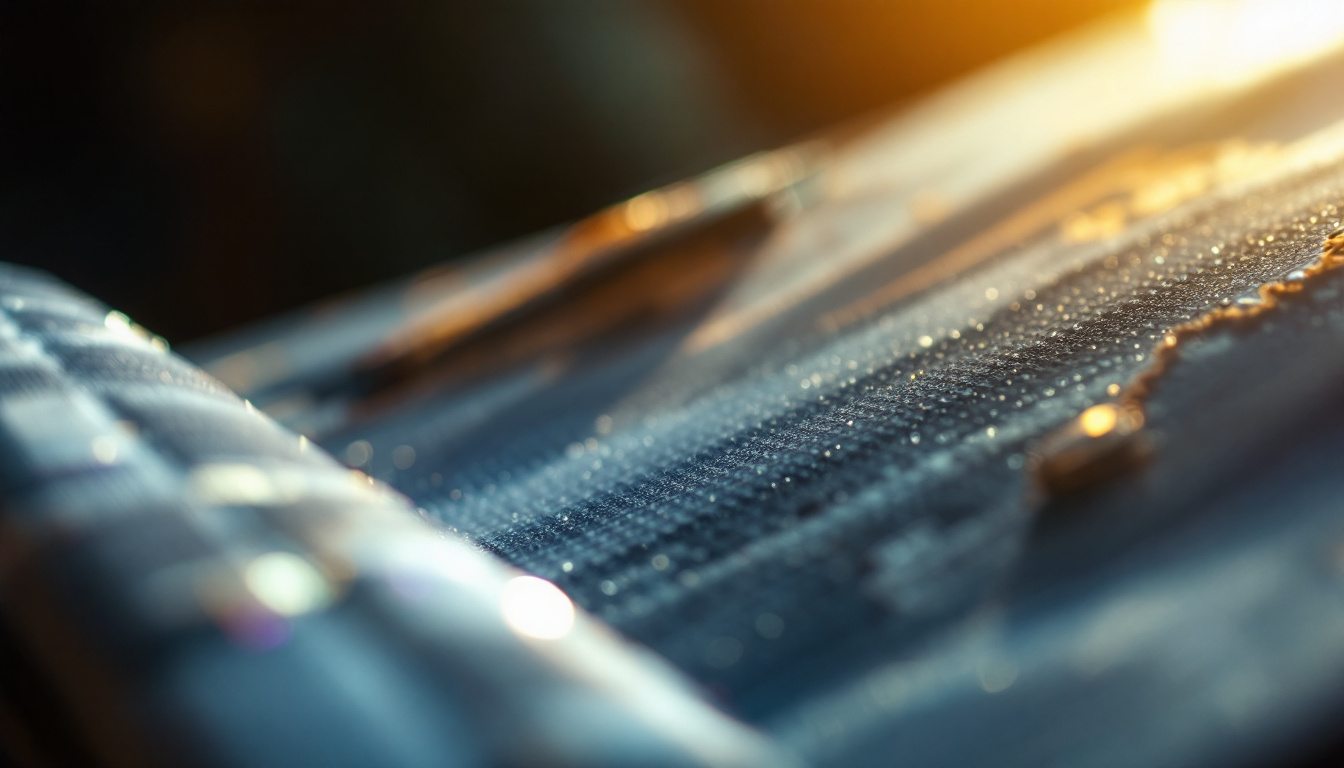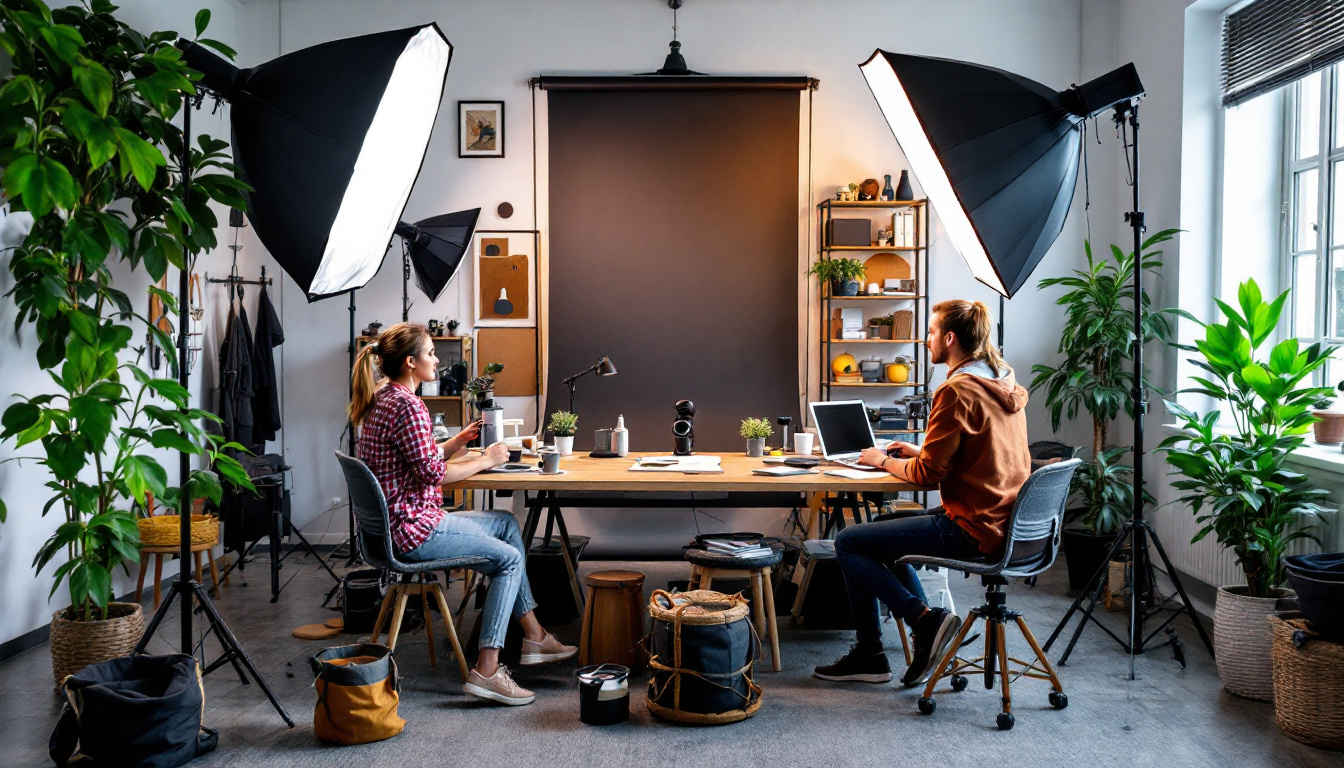Product photography is an essential aspect of marketing, as high-quality images can significantly influence consumer behavior and decision-making. In this article, we will explore the importance of product photography, the essential equipment needed, tips for preparing your photoshoot, and effective techniques to capture captivating images.
Understanding the Importance of Product Photography
In today’s competitive market, product photography serves as a powerful tool for businesses to showcase their offerings. Potential customers often rely on images to make purchasing decisions, making it crucial for e-commerce platforms and brands to invest in professional photography.

Strong product photos not only present items in an appealing way but also help to convey a brand’s identity. When done correctly, they can evoke emotions and create a connection with the audience, ultimately leading to increased sales. The visual representation of a product can tell a story, highlighting its features and benefits in a manner that text alone cannot achieve. For instance, a beautifully styled image of a kitchen appliance in use can inspire a consumer’s imagination, allowing them to envision how it will enhance their culinary experiences.
The Role of Product Photos in Marketing
Marketing strategies often hinge on visual content, with product images serving as the centerpiece of advertisements and online listings. Compelling visuals capture attention and draw in potential customers, turning casual browsers into committed buyers. As social media platforms continue to grow, the importance of eye-catching product photography becomes even more pronounced. Brands that leverage platforms like Instagram and Pinterest can significantly enhance their reach by sharing stunning images that resonate with their target audience.
In addition to attracting attention, well-crafted product images can enhance a brand’s credibility. When customers see professional, high-quality photos, it signals that the brand takes pride in its products and is serious about delivering value. Moreover, incorporating lifestyle shots that depict products in real-world scenarios can further solidify a brand’s authenticity. Such images not only showcase the product but also illustrate its practical applications, making it easier for consumers to relate to and trust the brand.
How Quality Images Influence Consumer Perception
Quality images contribute significantly to how consumers perceive a product. A well-lit, expertly composed photo can elevate a product’s perceived value, while poor images may lead to skepticism about the product’s quality and reliability. This phenomenon is particularly evident in industries such as fashion and electronics, where consumers often rely heavily on visual cues to gauge quality and desirability.
Research indicates that consumers are more likely to trust brands that utilize high-quality visuals. This trust translates into higher conversion rates and customer loyalty, making product photography an integral part of any marketing effort. Furthermore, the consistency of visual style across a brand’s product range can reinforce brand identity and foster a sense of familiarity among consumers. By maintaining a cohesive aesthetic, brands can create a memorable impression that encourages repeat business and strengthens customer relationships.
Essential Equipment for Product Photography
Having the right equipment is crucial for capturing exceptional product images. While professional photographers might invest in high-end gear, many excellent photos can be taken with budget-friendly options as well.
Understanding the basic equipment that can enhance your product photography will empower you to create stunning images that engage your audience effectively.
Choosing the Right Camera
The camera is arguably the most important piece of equipment for product photography. Depending on your budget and level of expertise, you have options ranging from DSLRs and mirrorless cameras to high-quality smartphones.
When selecting a camera, consider features such as resolution, lens compatibility, and manual control options. A camera that allows for customization will enable you to create the desired look for your images. Additionally, investing in a good lens can significantly impact the quality of your shots; macro lenses, for example, are ideal for capturing intricate details of small products, while wide-angle lenses can help showcase larger items in their entirety.
Importance of Lighting Equipment
Lighting is a critical factor in photography that can make or break your shots. Proper lighting helps to bring out the details and colors of a product, ensuring that it is depicted accurately and attractively.
Investing in softboxes, ring lights, or natural light reflectors can vastly improve your photography setup. Experimenting with different lighting conditions can also provide unique effects that enhance your product’s appeal. For instance, backlighting can create a halo effect around transparent products, while diffused lighting can soften shadows and reduce glare, giving your images a polished look. Understanding the color temperature of your lights is equally important; using lights with the same temperature will ensure consistency across your shots, making your product images more cohesive.
Selecting the Perfect Background
The background of your product photos significantly affects the overall composition and aesthetic. A cluttered or distracting background can take focus away from the product, diminishing its appeal.
Neutral backgrounds, such as white or grey, tend to work well for many products as they allow the item to take center stage. However, using textured or colorful backgrounds can add personality and context, provided they complement the product appropriately. For instance, a rustic wooden backdrop can enhance the charm of handmade goods, while a sleek, metallic surface may be ideal for tech gadgets. Additionally, consider the use of props or lifestyle elements in your backgrounds to create a narrative around your product, making it more relatable to potential customers and helping them envision its use in their own lives.
Preparing for the Product Photoshoot
Preparation is key to a successful photoshoot. A well-planned session can save time and enhance the quality of your images significantly. By following a few simple steps, you can ensure that everything runs smoothly on the day of the shoot.

Planning Your Photoshoot
Before you even set up your camera, create a detailed plan outlining the goals of your photoshoot. This plan should include a checklist of products to photograph, shots to capture, and any additional props needed.
Deciding on a theme or concept for your shoot will help guide your choices throughout the process. Whether it’s minimalistic, lifestyle-oriented, or something else, having a vision will lead to more cohesive results. Additionally, consider the target audience for your products; understanding their preferences can influence the style and mood of your photoshoot. Researching similar products and noting what works well for others can also provide valuable insights that elevate your own photography.
Setting Up Your Studio
A dedicated studio space can enhance your product photography by allowing for controlled lighting and backgrounds. Choose a space with ample natural light or invest in artificial lighting setups to achieve the desired ambiance.
Ensure that your shooting area is organized and free from clutter. Create designated zones for styling products, setting up equipment, and reviewing images to streamline the workflow. Furthermore, consider the backdrop options available to you; whether it’s a seamless paper, fabric, or a textured surface, the background can dramatically affect the final image. Experimenting with different backgrounds can help you discover what best complements your products and enhances their visual appeal.
Product Placement and Styling
Effective product placement and styling play a pivotal role in creating engaging images. Consider the angles, distances, and arrangements that will bring out the best features of each product.
Using props that complement the product can also enhance the storytelling aspect of your images. However, be careful to ensure that the props do not overshadow the product itself. Additionally, think about incorporating elements that reflect the lifestyle associated with your product; for instance, if you’re photographing kitchenware, including ingredients or utensils in use can create a more inviting scene. Don’t hesitate to try different arrangements and take multiple shots from various angles; sometimes the best image comes from an unexpected perspective that you might not have initially considered.
Photography Techniques for Captivating Product Images
Once you have your equipment and setting ready, mastering specific photography techniques can take your images to the next level. Utilizing these practices will help you capture dynamic and visually appealing product photos.

Mastering the Art of Lighting
As mentioned previously, lighting plays a crucial role in product photography. To achieve the best results, understand how to manipulate natural and artificial light. Experiment with shadows and highlights to create depth in your images.
Soft, diffused light is often ideal for product photography as it minimizes harsh shadows and highlights while bringing out details. Consider using reflectors or diffusers to manage lighting effectively.
Exploring Different Angles
Experimenting with various angles can provide a fresh perspective on your product. Instead of sticking to standard head-on shots, try different view points to showcase unique features.
Capturing images from above, side angles, and at eye level can engage viewers and offer them a comprehensive look at the product, helping them visualize it better.
Focusing on Details
Close-up shots that highlight the intricate details of a product can greatly enhance your photography portfolio. Showcasing textures, materials, and small features allows customers to appreciate the quality of your products.
Utilizing macro lenses or zoom features on your camera can enable you to capture these details flawlessly. Such techniques can make your product images stand out in a crowded market.
In conclusion, mastering the art of product photoshoots requires understanding the significance of photography, utilizing the right equipment, careful preparation, and employing effective techniques. By putting these tips into practice, you will be well on your way to creating stunning product images that captivate your audience and enhance your brand’s visibility online.
Now that you’re equipped with the knowledge to take stunning product photos, streamline your workflow with Cliqora. Our SaaS platform is designed specifically for photographers to share their work effortlessly with clients. Say goodbye to the hassle of hard drives and cumbersome file-sharing services. With Cliqora, enjoy super fast resumable uploads, everlasting access for clients via our mobile app, and private sharing through AI face detection. Plus, manage your clients, contracts, and payments all in one place. Ready to elevate your photography business? Register for Early Access and create your first Project on Cliqora for free! Join us and be part of the early access community.



